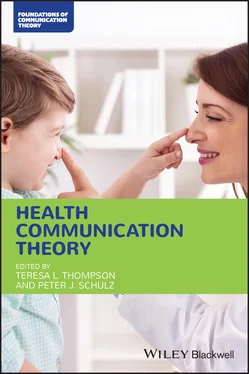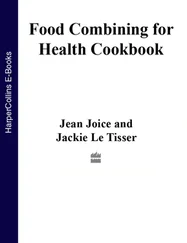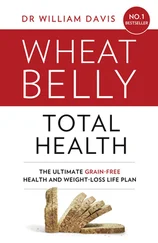Dannielle E. Kelley, National Cancer Institute
Arunima Krishna, Department of Mass Communication, Advertising, and Public Relations, Boston University
Yanqin Liu, Clinical Studies Unit, Mayo Clinic Arizona
Michael Mackert, Center for Health Communication, Stan Richards School of Advertising & Public Relations, Moody College of Communication
Marianne S. Matthias, Department of Medicine, Indiana University
Maria D. Molina, Department of Advertising and Public Relations, Michigan State University
Robin L. Nabi, Department of Communication, University of California, Santa Barbara
Rebekah H. Nagler, Hubbard School of Journalism and Mass Communication, University of Minnesota
Sarah M. Parsloe, Department of Communication, Rollins College
Sandra Petronio, Department of Communication, IUPUI
Rachyl Pines, Research Administration Department, Santa Barbara Cottage Hospital
Brian L. Quick, Department of Communication, University of Illinois at Urbana‐Champaign
Tobias Reynolds‐Tylus, School of Communication Studies, James Madison University
Anthony J. Roberto, Hugh Downs School of Human Communication, Arizona State University
James D. Robinson, Department of Communication, University of Dayton
Peter J. Schulz, Institute of Communication & Health, School of Communication, Culture and Society University of Lugano (Università della Svizzera italiana)
Barbara F. Sharf, Independent Scholar and Professor Emerita, Dept. of Communication, Texas A & M University
Brian G. Southwell, RTI International, Duke University, University of North Carolina at Chapel Hill
Anne M. Stone, Department of Communication, Rollins College
S. Shyam Sundar, Donald P. Bellisario College of Communications, Pennsylvania State University
Teresa L. Thompson, Professor Emerita, Department of Communication, University of Dayton
Yan Tian, Department of Communication and Media, University of Missouri‐St. Louis
Jeanine W. Turner, Communication, Culture and Technology Program, Georgetown University
Monique Mitchell Turner, Department of Communication, Michigan State University
Shawn Turner, Department of Communication, Michigan State University
Bernadette Watson, Director, International Research Centre for the Advancement of Health Communication (IRCAHC), Department of English, The Hong Kong Polytechnic University
Jill Yamasaki, Jack J. Valenti School of Communication, University of Houston
Marco Yzer, Hubbard School of Journalism and Mass Communication, University of Minnesota
PART I Perspectives on the Field of Health Communication
1 The Basics of Health Communication Theory
Teresa L. Thompson and James D. Robinson
Health problems are prevalent all over the world, and communication processes play essential roles in addressing these health problems. From Ebola, MERS, Zika, and COVID‐19 to vaping and the opioid epidemic, various health crises must be confronted across the world on a constant basis. The area of study that has come to be called “health communication” is crucial as practitioners and scholars attempt to alleviate and minimize a multitude of health problems and improve health care delivery. Effective and useful health communication is foundational as we attempt to control the spread of disease and health problems.
Do message strategies that encourage people to manage their diet to control diabetes also inspire them to look more closely at vaccination decisions? In other words, can we generalize what we learn about health communication regarding one health problem to other health issues? Does the study of patient‐centered communication have implications for mental health as well as physical health and illness? Does message targeting or tailoring allow the effective adaptation of anti‐vaping messages to different audiences? These and other questions are conceptual and theoretical concerns that underlie health promotion and a broader understanding of health communication processes. Through health communication research one may understand not only how communication operates in relation to a particular health issue, but how health communication functions more broadly. Indeed, the ultimate hope is an increased understanding of communication processes across contexts and a healthier world.
As is evident in the title of this volume, the focus of this book is on the theories that we use to study health‐related processes. Our goal is to help students, scholars, and practitioners more adequately examine health communication concerns by grounding their work in solid theory. We thus begin the volume by briefly defining health communication, health, health care delivery, and theory. We then talk about why theory is important in the study of health communication. We follow this with brief discussions of the traditions of health communication theory and generative tensions in health communication scholarship. This chapter concludes with a preview of the remainder of the book and a discussion of ethical concerns.
What is Health Communication?
It is frequently noted that the area of study that has become known as health communication began to emerge from research in the 1940s that looked at the persuasive impact of health information and promotion, although Salmon and Poorisat (2019) point to even earlier traditions from the field of public health. This work goes back to the development of germ theory and can be traced to the beginning of the twentieth century. Starting with newspapers and then moving to film, radio, and television, media campaigns about health issues began to appear. The emergence and refinement of social science research methods, including the development of Thurstone and Likert‐type scales and sampling techniques à la George Gallup, was another central factor in the progress that was made during earlier decades of the twentieth century. Salmon and Poorisat (p. 1) identify four key factors that influenced and characterized this growth:
1 the early use of mass communication for public health campaigns (1900–1910s);
2 the search for effects (1920–1930s);
3 the search for explanation from interdisciplinary perspectives (1940–1950s); and
4 the formal recognition of health communication as a distinct and valuable field of practice and research (1960s).
The reader will see these influences reflected in the theories and chapters that follow.
The Stanford Heart Disease Prevention Program, which began in 1971, was also an important development in the history of health communication. During the early 1970s scholars such as Barbara Korsch and her colleagues (e.g. Korsch and Negrete, 1972) conducted work that served as the foundation of research on physician–patient communication. This work, published in such prestigious outlets as Scientific American , created interest within the broader field of communication. Some of this work was labeled “medical communication.” Simultaneously, scholars building on the interactional view articulated in Watzlawick, Beavin, and Jackson’s (1967) Pragmatics of Human Communication and further developing the conceptualization of communication processes offered by Gregory Bateson (1972) focused on what was called “therapeutic communication.” These traditions came together beginning in the early‐1970s to prompt the development of the new area of study called “health communication.” The inception of the Health Communication Division of the International Communication Association in 1975 (following the founding of the Health Communication Interest Group in 1972) most clearly demarcated this new area of study. The movement within medicine, public health, and the social sciences from a biomedical approach to a biopsychosocial view was simultaneously occurring (see Ho and Sharf, Chapter 14in this volume, for more discussion of this).
Читать дальше












